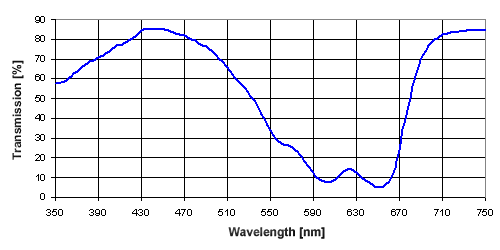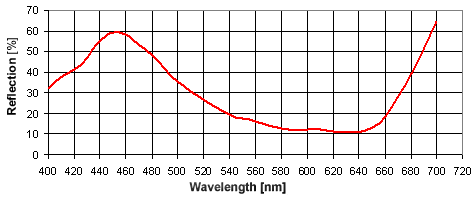pigments.synthesia.eu / Organic pigments / Special applications / OSTAPLAST BLUE R
OSTAPLAST BLUE R
| Characteristic | |
| C. I. | Solvent Blue 104 |
| C. I. No. | 61568 |
| CAS No. | 116-75-6 |
| Chemical Class |
Anthraquinone |
| Illustrations | |||
|
|
|
|
|
| 0,01 % | 0,05 % | 0,10 % | 0,10 % + TiO2 |
| Properties | |
| Specific Weight [g/cm3] | 1,21 |
| Bulking Volume [ l/kg] | 2,24 |
| Melting Point [°C] | 241 |
| Concentration for 1/3 of Standard Depth in PS [%] | 0,11 |
| Fastness to Chemicals | |
| Resistance to radical forming agents | |
| Dibenzoyl-peroxide | - |
| Methyl-ethyl-keton-peroxide | - |
| Dilauroyl-peroxide | - |
| Fastness to bleeding in PS | |
| Destilled Water | 5 |
| 5 % Acetic Acid | 5 |
| 15 % ethanol | 5 |
| Cooking oil | 5 |
| 50 % ethanol | 5 |
| n-heptan | 5 |
| 3 % Solution Na2CO3 in Water | 5 |
| Solution 2 % NaCl and 2 % Wine Acid | 5 |
| Other Fastness | |
| Light - full shade - 0,05 % | 7 |
| Light - 0,05% + 1% TiO2 | 6 |
| Heat Resistance [°C] | 300 |
| Migration | 5 |
| Curves |
| Transmission Curve |
|
|
| Remission Curve |
|
|
| Application Possibilities | |
| Polystyrene |
|
| ABS |
|
| Polycarbonate |
|
| Polyethylenterephtalate |
|
 suitable suitable
|  partially suitable partially suitable
|
| Testing methods | |
|
|
Detailed product information can also be saved in PDF format

News
02/02/2024 |
Synthesia
Notice of change of shareholder of Synthesia, a.s.
Notice of change of shareholder of Synthesia, a.s.
23/12/2022 |
Synthesia
PF 2024
PF 2024
14/03/2023 |
Synthesia
Synthesia received the AAA Platinum Excellence Award
Synthesia received the AAA Platinum Excellence Award


